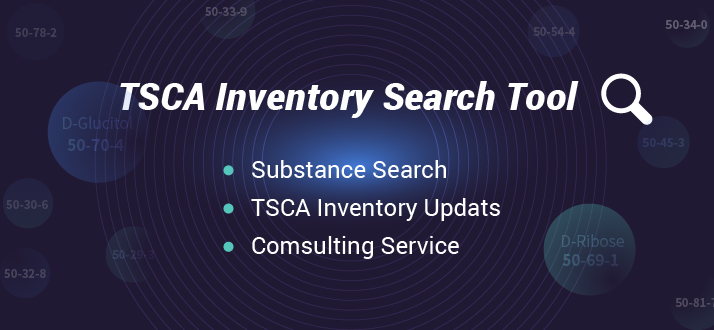Green Chemistry and Future Changes to Relevant Regulations
The European Commission adopted its Chemicals Strategy for Sustainability (hereinafter referred to as Strategy) on October 14, 2020, which is in the framework of the European Union Green Deal whose primary goal is to bring about climate neutrality for Europe by 2050, aiming to better protect humans and the environment from hazardous chemicals. Speaking at the CRAC-HCF 2021, Mr. Otto Linher, who is the Senior Expert in the European Commission dealing with the revision of the EU REACH regulation, introduced the implementation of the Strategy, and corresponding actions and regulation future changes in detail. This Strategy includes over 80 actions, such as:
- boosting the investment and innovative capacity for production and use of chemicals that are safe and sustainable by design;
- establishing a simpler “one substance one assessment” process for the risk and hazard assessment of chemicals;
- banning the most hazardous chemicals in consumer products – allowing their use only where essential; and
- revising relevant legislation, including EU REACH and EU CLP, subject to comprehensive impact assessments; etc.
Mr. Linher shared that the main elements of EU regulations will remain in place, however, they will be tightened and revised to increase the efficiency of the regulations to address chemical risks, in particular for the most hazardous substances (e.g. endocrine disruptors, persistent substances).
- EU REACH: revising information requirements for registration and the provisions for dossier and substance evaluation; improving the generic approaches to risk management; simplifying communication in the supply chains; etc.
- EU CLP: adding new hazard classes on endocrine disruptors; clarifying the definitions of mixtures and complex substances; improving labeling; etc.
Overall, the whole chemicals legislation is to be given a much more hazard-based orientation. The European Commission is currently undertaking an impact assessment to decide on the most appropriate way forward and has launched a public consultation on the revision of EU CLP regulation. The implementation after adoption of the revised regulations (around 2023-2025), will be probably in a stepwise approach.
According to Mr. Linher’s speech, there are still many challenges to achieve the goal of green chemicals transition although there is an increasing awareness and capacity on deployable green chemistry approaches for products and processes. Regarding the challenges, what follows are the key points of Ms. Tatiana Santo’s speech:
- Rapid increase of consumption and production in emerging economies causes a heavy burden on the earth and it’s hard to be relieved in the coming years;
- Global supply chain becomes more complex with obvious consequences to the risk management;
- Divergent risk management systems and double standards; and
- Lack of chemicals info and corporate liability.
Ms. Santo pointed out that global action and partnership for chemical risks safe and sustainable management would be the urgent need.

As well as reported by Prof. Joel Tickner, the chemical industry with right incentives and changes plays a critical in the global economic and sustainable development. Efforts are underway to address the impact of the chemical activities, such as climate changes, toxic impact, and plastic generation. However, innovation of designing safe and sustainable chemicals that are in a more circular form from their production to use and deposal is still a challenge. In his opinion, there are some methods to meet the goal of green chemistry, such as:
- New regulatory and financial incentives and disincentives to reduce production of and demand for fossil fuel-based, toxic, and non-circular chemicals and materials while increasing incentives for more sustainable options;
- Public-private, long-term and sustained investment and support for research, innovation and technology transfer of safer and fossil-free chemicals, production systems, and products; and
- Government-private sector partnerships and industry collaborations that align demand signals and grow markets for more sustainable chemicals and materials.
In China, serious measures have been taken to accelerate the green transition of chemical industry, showing China’s ambition in the new era to fight against climate change. As stated by Mr. Pang Guanglian, China has adopted new policies to cut down the energy consumption and taken new actions to improve hazardous chemical management, including:
- The Action Plan to Hit Carbon Emission Peak Before 2030 was released on October 26, 2021. China is taking action to reduce carbon emission and waste, promote renewables and unconventional fuel, and support technology innovation. (ChemLinked news)
- The revised Law of the People’s Republic China on the Prevention and Control of Environmental Pollution by Solid Waste was adopted on April 29, 2020 and took effect on September 1, 2020. To reduce the municipal solid wastes from the source, compulsory national standards on limiting excessive packaging are formulated. In addition, the prohibition and restriction of the manufacturing, sale, and use of disposable plastic products are specified in the revision. (ChemLinked news)
- QR Code Pilot Project in Guangdong province: “one chemical package – one QR code” for all hazardous chemicals. As of September 2021, there are 95% of enterprises in Guangdong province participated in this project. Each registered product will be assigned a QR code, through which the user will be connected to the system to access all relevant registration information and download the corresponding SDS and label of the product.
The four panelists agreed that international cooperation to promote safe and sustainable development of chemical industry is essential. As the chemical industry is a global industry and its impacts are also global in nature, the partnership shall happen at a global level to optimize the standards of chemical managements and share experiences. For chemical enterprises, having a good command of global regulations and standards related to the green chemistry and taking actions to the innovations of safe and sustainable chemicals will be good for the business.
